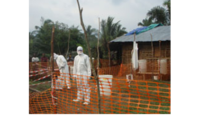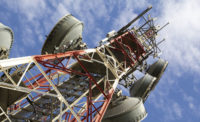Nitrous oxide, or laughing gas, is the most common inhaled anesthetic used by dental practitioners. Although considered safe for occasional use in patients, studies show that long-term, work-related exposure may increase the risk of diseases of the nervous system, kidneys, and liver and of miscarriage and infertility. Fortunately, there are ways to minimize exposure of dental workers to nitrous oxide.
About the study
To examine whether recommended controls are used to minimize exposure to nitrous oxide during dental procedures,the National Institute for Occupational Safety and Health (NIOSH) surveyed 284 practicing dentists, dental hygienists, and dental assistants for the Health and Safety Practices Survey of Healthcare Workers. These respondents worked in private dental practices and reported administering nitrous oxide and no other anesthetic gases to their adult and pediatric patients in the 7 days prior to the survey. Findings were recently published in the Journal of Occupational and Environmental Hygiene.
The two primary controls used to minimize dental practitioners’ exposure to nitrous oxide and other anesthetic gases during procedures include (1) special masks for patients, known as nasal scavenging masks, and (2) local exhaust ventilation (i.e., a duct or hood positioned near the patient’s mouth). Both controls remove exhaled gas before it disperses into the room. Other controls include general room ventilation, regular inspections of equipment for leaks, training on the safe use of anesthetic gases, and monitoring of the air and health-related symptoms for possible exposure to nitrous oxide and other anesthetic gases.
Good news, bad news
The good news is that nearly all of the survey respondents reported using either nasal scavenging masks or local exhaust ventilation, with the former the preferred method of control. Other findings, however, showed that there is room for improvement related to administrative and work-practice controls:
- In the area of administrative controls, nearly all survey respondents reported undergoing training on handling nitrous oxide safely, but 85% of dentists and 63% of dental hygienists and assistants said that their training occurred more than a year prior to the survey. Though annual refresher training is not required, it would increase the likelihood that precautionary measures become second nature.
- Forty percent of respondents reported that they did not always check nitrous oxide equipment for leaks.
- Nearly all dentists reported safe handling procedures were available at their workplace, compared to only two-thirds of dental hygienists and assistants. Furthermore, one-third of dental hygienists and assistants said either that their workplace had no standard procedures or that they did not know if standard procedures were available.
- In the area of monitoring for exposures, less than 10% of all respondents reported that monitoring for nitrous oxide had occurred at their workplace within the past year. Similarly, survey respondents did not report consistent use of controls related to work practices. For example, nearly half said that they did not always check nitrous oxide equipment for leaks.
More information is available:



